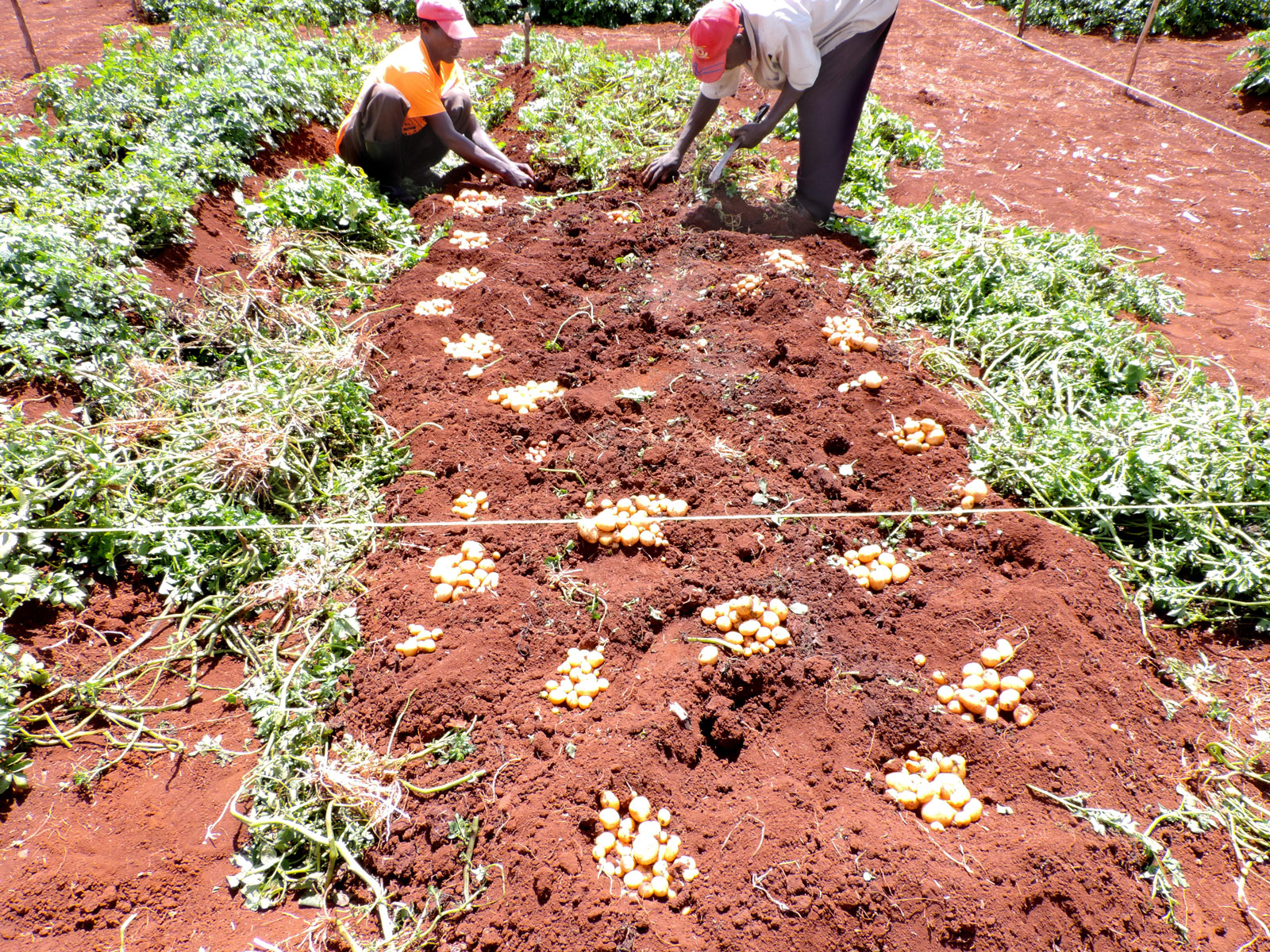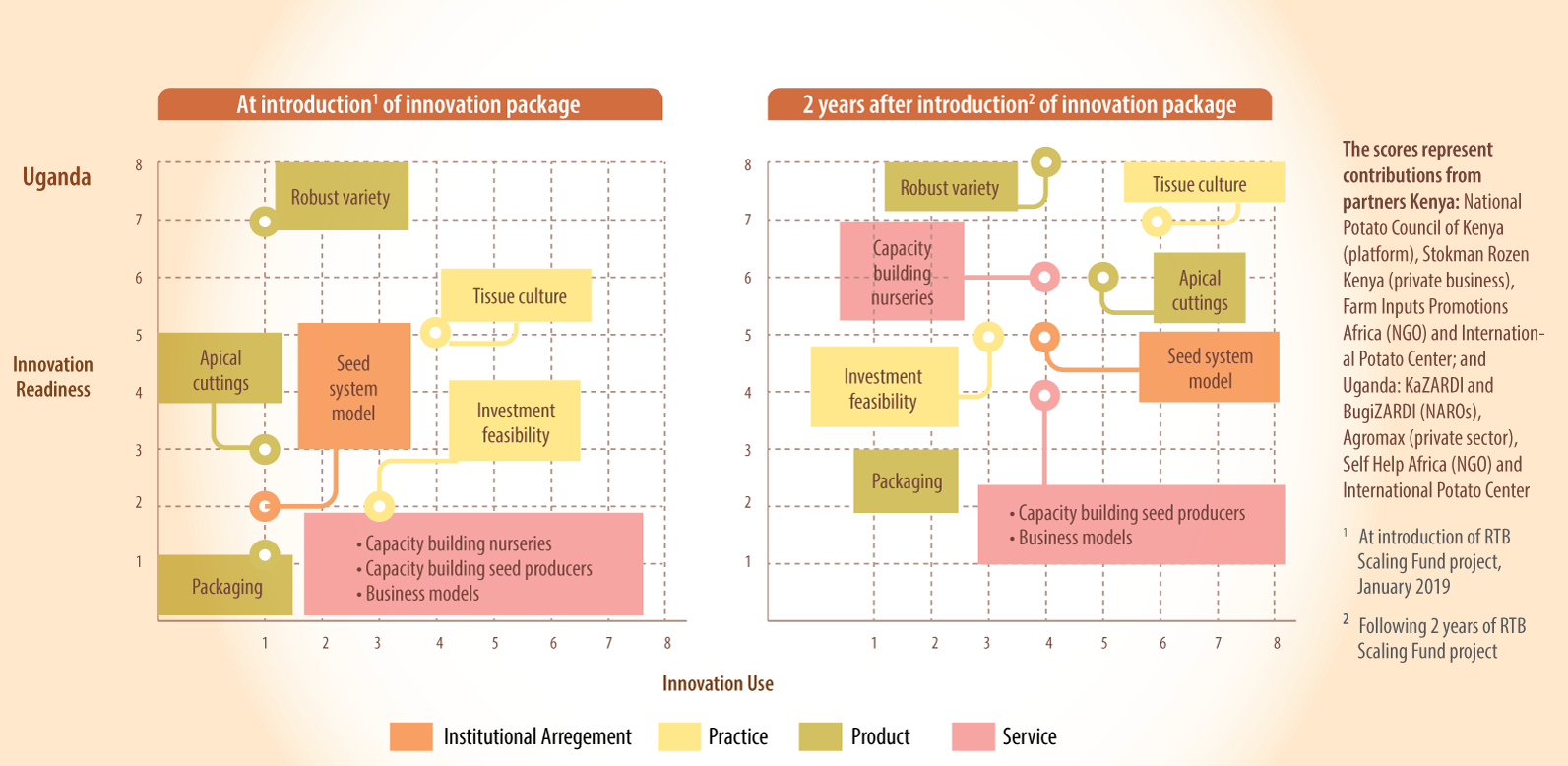Researchers often face challenges as they translate their research into innovations for use at a large scale. Since 2018, the RTB Scaling Fund supported rooted apical cuttings (RAC) and seven other projects in Africa and Latin America to bring promising innovations into use. The projects used Scaling Readiness, a step-by-step approach to critically assess the readiness to scale innovations, and implement strategies aimed at resolving bottlenecks for scaling. The Scaling Fund was successful in advancing selected innovations and also contributed to improving the Scaling Readiness approach.

Research for development organizations struggle to find the best approaches to scale their innovations. Researchers often work more on the technical side of their innovations than on marketing, policy, communication and the rest of the enabling environment. FP5 is designing strategies to take innovations to scale, with mechanisms like the RTB Scaling Fund.
Since 2018, RTB has sent out several calls for concept notes on innovations seeking Scaling Fund support. An independent panel assessed the scaling readiness of those innovations. Each year, the innovations with the highest scores received funding. Since 2018, three batches of projects have been funded, for two years each (Table 1).
Table 1. Overview of the eight Scaling Fund Projects awarded and implemented between 2017 and 2021
| RTB Scaling Fund Batch | ||
| 2018-2019 | 2019-2020 | 2020-2021 |
| 1. Scaling Single diseased-stem removal (SDSR) for BXW banana disease in Burundi, eastern DR Congo, Rwanda and Uganda | 1. Orange Fleshed Sweetpotato (OFSP) Puree for safe and nutritious food products and economic opportunities for women and youths in Kenya, Uganda and Malawi | 1. TRICOT - Scaling RTB crop variety validation and diffusion using farmer citizen science in Ghana and Rwanda |
| 2. Conserving sweetpotato roots to produce planting material known as Triple S in Ethiopia and Ghana | 2. Scaling approach for flash drying of cassava starch and flour at small scale in Nigeria, DR Congo and Colombia | 2. Scaling AKILIMO – A Digital fertilizer recommendation service in Nigeria, Tanzania and Rwanda |
| 3. A technology for turning cassava peels into an ingredient of animal feed in Nigeria | 3. Scaling Rooted Apical Cuttings in Kenya and Uganda | |

The Scaling Fund does more than award money to winning projects. RTB’s FP5 team also guides project leaders as they design scaling strategies based on the Scaling Readiness Approach, monitoring their progress, and drawing lessons to inform critical thinking about scaling. Scaling Readiness provides concepts, practices and tools to guide decision-making on scaling of innovations. It supports the design of context-specific innovation packages. The approach assesses each innovation in the package for its readiness to contribute to development outcomes. This provides a basis for identifying the bottlenecks for scaling and developing and implementing strategies to overcome them.
One of the projects supported in Year 2 was for rooted apical cuttings (RACs), an innovation based on exploiting the yield potential of juvenile planting material to start bulking seed in the field. RACs are distributed to seed producers to plant in the field to bulk quality seed to quickly disseminate novel varieties. The innovations in the package comprise:
RAC method: Cuttings are taken from plantlets in the screen-house and transplanted into plugs of substrate. The cuttings take root and grow into vigorous plantlets which can be planted in the field
Robust market-demanded variety: Tolerant to disease, heat and water stress
Tissue culture: Starter material for cuttings and must be in place where cuttings are to be produced
Seed system model: An integrated complex of seed producers from tissue culture to commercial seed and service providers and other stakeholders
Packaging: Economically viable options for packaging material and transport of rooted apical cuttings
Capacity building: Developing capacity of stakeholders in the technology and in seed production. Nurseries and seed producers are backstopped until they can operate independently
Investment feasibility: Ensure that the various innovations are economically feasible for users
The RACs innovation package was assessed using the concepts of Innovation Readiness and Innovation Use. Innovation Readiness is the demonstrated capacity of an innovation to fulfill its contribution to development outcomes in specific locations. Innovation Use indicates the level of use of the innovation or innovation package by the project members, partners and society (Table 2).
Table 2. Summary definition of levels of innovation readiness and use (Sartas et al. 2020)
| Stage | Innovation readiness | Innovation use |
| 1 | Idea | Intervention team |
| 2 | Basic Model (testing) | Direct partners (rare) |
| 3 | Basic Model (proven) | Direct partners (common) |
| 4 | Application Model (testing) | Secondary partners (rare) |
| 5 | Application Model (proven) | Secondary partners (common) |
| 6 | Application (testing) | Unconnected developers (rare) |
| 7 | Application (proven) | Unconnected developers (common) |
| 8 | Innovation (testing) | Unconnected users (rare) |
| 9 | Innovation (proven) | Unconnected users (common) |
Over two years, the project improved the scaling readiness of the RAC innovations, especially with two critical bottlenecks: packaging and capacity development (Figure 2). Monica Parker who led the project explained that “the cuttings were accepted by users so quickly that they were being used incorrectly. The plantlets looked more like stem cuttings than high-yielding apical cuttings. This is being corrected through communication and various training events.”
Parker observes that “Scaling Readiness helps researchers to understand that innovations do not scale themselves. The Scaling Fund supports a project as it anticipates obstacles, and then overcomes them.”
The application of the Scaling Readiness approach with these projects enhanced scaling, but implementing the projects also improved the approach itself. Building on this work, the FP5 team has now published guidelines, and an article describing its theoretical underpinnings with more thorough outcome studies underway.

SHARE THIS

